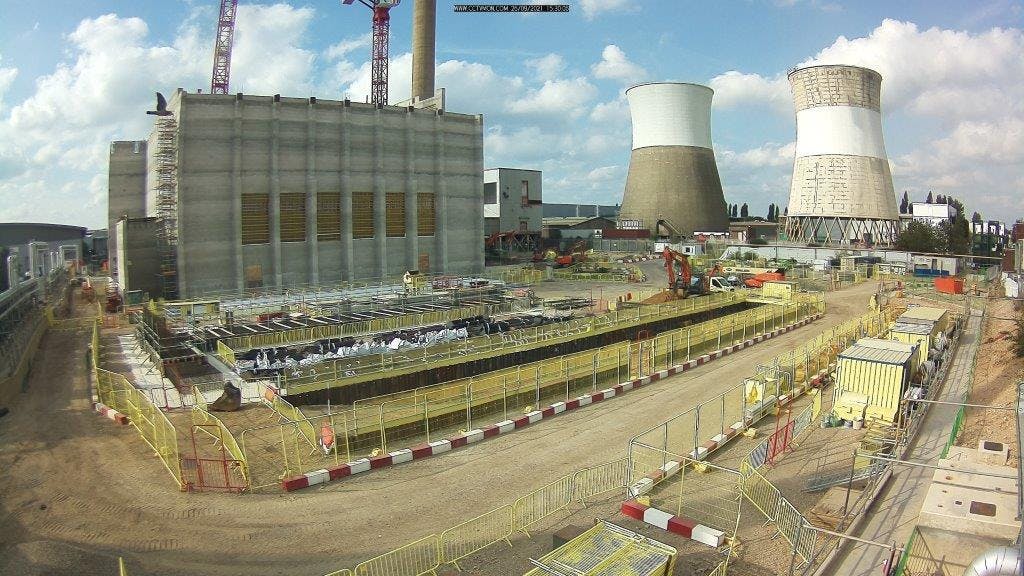Seven day continuous concrete pour at EfW facility

Careys are proud to have completed a seven-day continuous slipform pour with London Concrete and GB Slipform, consisting of 3,300 cubic metres of concrete, for SSE and joint venture partner CIP.
- Careys
- Thursday 9th December 2021
Share this:-
Principal contractor Hitachi Zosen Inova are building a £400m energy-from-waste (EfW) plant on Slough Trading Estate, which is expected to be fully operational by 2024, processing 480,000 tonnes of waste each year.
Construction of the main waste bunker at the new facility started earlier this year. Aggregate Industries subsidiary London Concrete was brought in to assist Careys and GB Slipform in the delivery of a 24/7 concrete supply. Aggregate Industries’ low carbon concrete, ECOPact Prime, was specified to deliver the workability performance needed for a slipform of this size while meeting the challenge set to reduce the embodied carbon of concrete.
A decision was made early in the process to use slipform to reduce the amount of construction joints in the walls of the waste bunker and ensure a watertight structure. It was also essential to make the bunker resistant to chemical attack, so the concrete needed to be DC-3 class compliant. The bunker was so large that it took seven days and nights to complete. Furthermore, use of ECOPact Prime, an engineered low carbon concrete that has higher blends of cement substitutes such as ground granulated blast-furnace slag (GGBS), presented challenges for slipforming when it came to setting times and compressive strengths, the contractors said.
Careys contracts manager Jamie Hamill explained: “We needed to carry out a number of samples of the different types of concrete mixes to make sure we got the right consistency and strength gain. We knew if the concrete went off too quickly in the shutter, then there would be little time to pour it correctly, there would be risks of blockages in the pumps, the rig would need to slide quicker to keep up and everyone would become under increasing pressure to work faster. This, we knew, would risk a poor finish, or the quality being jeopardised.
“On a big slide like this, you need to be slow and steady, so that you are always under control. The flipside is, however, if the concrete takes too long to go off, it is difficult to speed it up, which has a knock-on effect on the project time and cost. Getting the concrete right is not an exact science as there are lots of different factors that can affect its strength, hence why testing samples in a relative sample size to determine how quickly we wanted the concrete to set was so important on this project. We did this over a few weeks, and we got the correct strength.”
We'd love to hear from you, so please get in touch